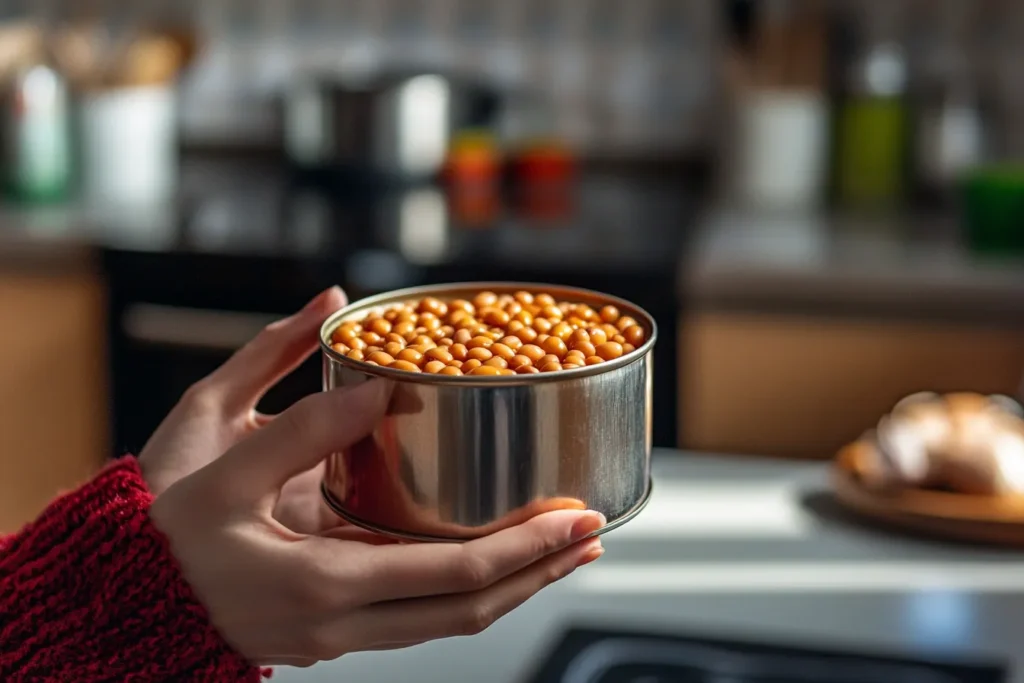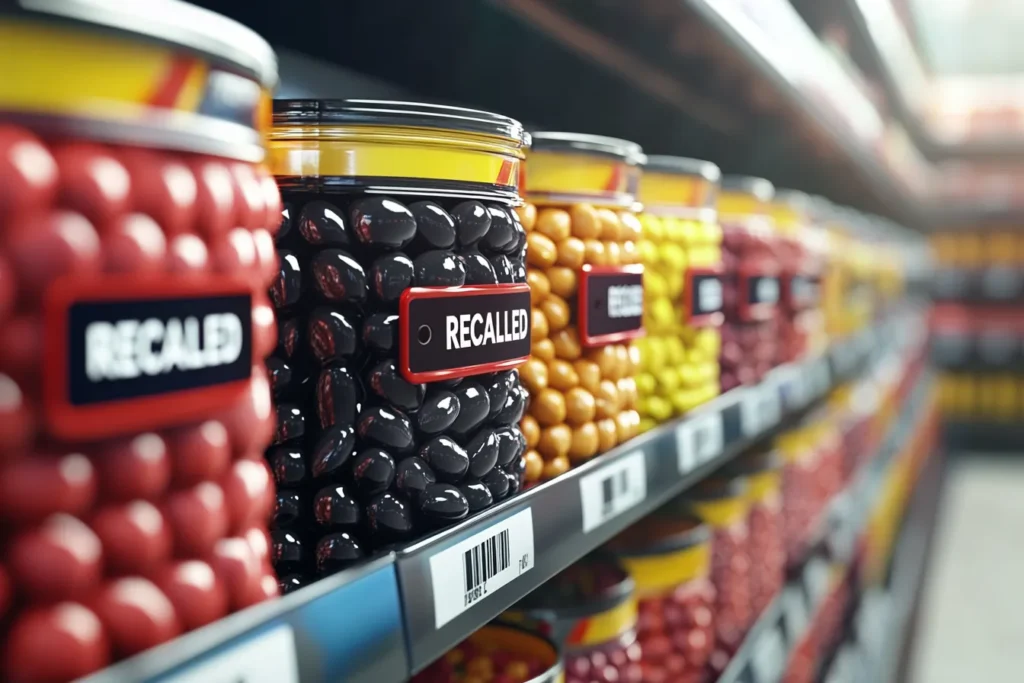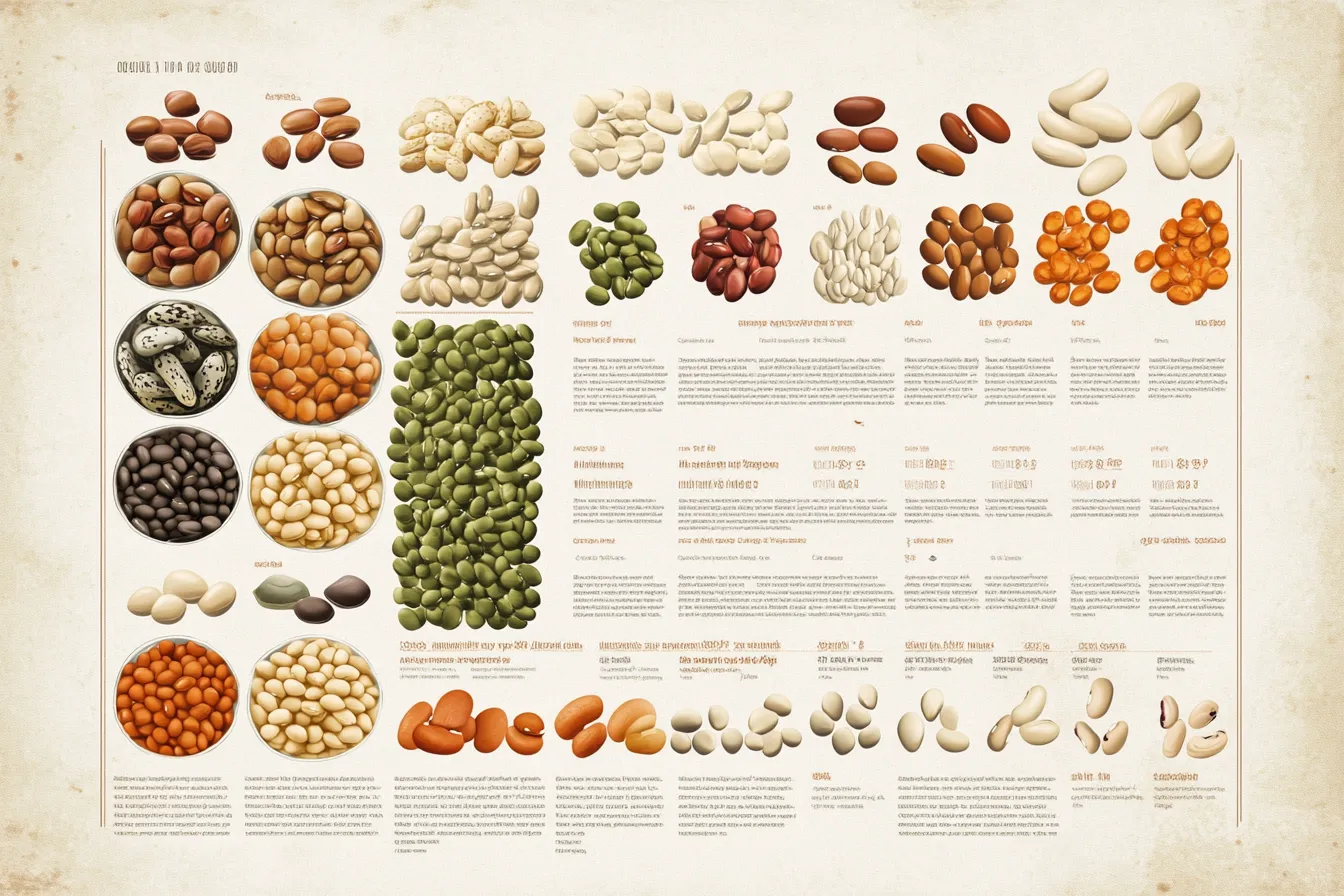Table of Contents
Introduction
Let’s be honest—we’ve all got a can of beans sitting in the back of our pantry 🥫. They’re cheap, last forever (well, almost), and can be a lifesaver on lazy dinner nights. But what if that innocent little can is hiding a dangerous secret?
Recently, the words “canned beans recall” have been making headlines across the U.S., leaving many people wondering:
“Wait… are my beans trying to kill me?” 😱
Okay, that might be a bit dramatic… or is it?
This guide will walk you through everything you need to know about canned beans recalls—from why they happen and what you should look for, to what you can do to protect your health and your family. We’re mixing facts with a pinch of humor, real talk, and a sprinkle of FDA know-how to keep things interesting.
“Food recalls aren’t just about bad beans—they’re about protecting your life. Yes, really.”
Let’s pop open this topic and see what’s inside (no can opener needed!).
What is a Canned Beans Recall?
Let’s start with the basics: What even is a canned beans recall?
A recall happens when a food product, like your go-to can of chili beans, is found to be unsafe, improperly labeled, or potentially harmful in any way. Companies or government agencies will then ask stores (and you!) to stop using, selling, or consuming that product…Dinner Ideas
Sounds serious? That’s because it is.
Understanding the Recall Process
Here’s how a recall generally works:
- 🚨 A Problem is Detected: This could be bacteria in the food (like botulism), sharp metal fragments, or even a labeling error that could trigger allergies.
- 🧪 Tests Are Run: The manufacturer or an agency like the FDA (Food & Drug Administration) performs lab testing.
- 📢 Recall Announcement: If something’s off, the company or FDA will issue an official recall notice.
- 🔁 Consumers Return or Dispose: Stores pull the cans off shelves, and consumers are advised to return them or toss them (safely!).
Block Quote:
“A food recall is like a fire alarm—it’s loud, urgent, and meant to save lives.” – FDA Safety Manual
Who Initiates the Recall? FDA vs. Manufacturer
There are two main recall bosses:
- Voluntary Recalls (Most Common): The manufacturer notices the issue first and notifies the FDA. This is like saying, “Oops, we messed up—here’s how we’ll fix it.”
- FDA-Mandated Recalls: If the company doesn’t act fast enough, the FDA steps in and issues a recall themselves. That’s like your mom coming in when you refuse to clean your room—stuff’s about to go down. 🧹

Top Reasons Behind Canned Beans Recalls
Let’s dive into why beans even get recalled in the first place. Spoiler alert: it’s not because they taste bad (although that might be a crime, too).
Bacterial Contamination: The Botulism Threat
One word: botulism.
It’s a rare but deadly illness caused by toxins produced by the Clostridium botulinum bacteria. When canned beans aren’t processed correctly, this bacteria can survive and grow, turning your beans into a biological weapon..Beef Jerky Recipe
Symptoms include:
- Blurred vision
- Muscle weakness
- Difficulty breathing
⚠️ If you suspect botulism, seek medical help immediately.
Packaging Defects and Swollen Cans
Have you ever picked up a can and noticed it looked like it was doing push-ups? 💪
Swollen, dented, or leaking cans are big red flags.
Defective seals or damage during shipping can let air (and bacteria) in, causing the beans to spoil.
👁️ Warning Signs:
- Bulging lid or bottom
- Rust or sharp dents
- Beans that smell… weird 😷
Labeling Errors and Allergen Misstatements
Imagine someone with a soy allergy eating beans mislabeled as “soy-free.” That’s not just careless—it’s dangerous. 😡
Labeling mistakes are actually one of the top causes of food recalls. They might involve:
- Missing allergens (soy, gluten, dairy, etc.)
- Incorrect nutrition info
- Ingredients not matching what’s actually in the can
Block Quote:
“It’s not just about what’s in your beans—it’s about what’s not on the label.” – Consumer Reports
Table: Common Ingredients in Canned Beans
| Ingredient | Purpose | Safe Amount |
|---|---|---|
| Pinto Beans | Base ingredient | 200g |
| Water | Cooking liquid | As needed |
| Salt | Flavor | 0.5g |
| Sugar | Taste enhancer | 1g |
| Calcium Chloride | Firming agent | 0.01g |
| Citric Acid | Preservative | 0.02g |
These ingredients are safe when processed correctly. But if the canning process is flawed, even water can turn into a bacteria bath.
Nutrition Facts Table (Per 1 Cup)
| Nutrient | Amount | % Daily Value |
|---|---|---|
| Calories | 210 kcal | 10% |
| Protein | 13g | 26% |
| Fiber | 10g | 40% |
| Fat | 1g | 2% |
| Sodium | 450mg | 20% |
| Carbs | 36g | 12% |
👀 These numbers look good—but remember, no nutrition matters if the can’s contents are spoiled or contaminated!

Recent Major Canned Beans Recalls in the U.S.
While a small dent in a can might not scare most people, some canned bean recalls have rocked the nation. Let’s look at some of the biggest (and scariest) real-life examples.
The 2023 Midwest Bean Co. Recall: What Went Wrong
In August 2023, the Midwest Bean Company issued a massive recall of over 2 million cans due to concerns about botulinum toxin contamination. This wasn’t just a one-state scare—it spanned across 16 states, with supermarkets like Kroger, Walmart, and Publix affected.
Block Quote:
“We urge consumers to immediately dispose of any affected cans… even if they look or smell normal.” – Midwest Bean Co. Spokesperson
The problem? A malfunction in their pressure canning equipment led to undercooked beans in hundreds of batches. Yikes.
Several people were hospitalized with botulism-like symptoms. Thankfully, no fatalities were reported—but it was close.
Famous Cases that Changed Industry Standards
Rewind to 2015: a batch of baked beans from XYZ Foods (name changed) was found to contain sharp metal shavings from a broken mixing blade. Hundreds of customers reported mouth injuries before the company recalled the product.
As a result, the FDA mandated that all bean canning factories perform weekly machine blade inspections, a rule that stands today.
These recalls aren’t just news headlines—they shape how your food is made and inspected.
How to Identify Recalled Canned Beans at Home
Now that you’re properly worried (😬), let’s arm you with the knowledge to spot danger before it hits your dinner plate.
Check Expiry Dates, Lot Numbers, and UPC Codes
Every can has a tiny set of numbers stamped into the top or bottom. Here’s what to look for:
- Best By Date – Expired? Toss it.
- Lot Number – Use recall sites to match this with known dangerous batches.
- UPC Code – That barcode number can be searched online or scanned using apps.
Quick Tip: Visit FDA’s Recalls Page and enter your lot number to check if your can is on the naughty list.
Recognizing Spoiled or Suspicious Cans
If it looks weird or smells funky—don’t taste-test it.
Block Quote:
“When in doubt, throw it out. Beans aren’t worth the ER visit.” – Grandma’s Wisdom, probably
🧠 Use your senses:
- Sight: Dented, bulging, or leaking cans = danger.
- Smell: Metallic, sour, or rotten odors are red flags.
- Touch: Sticky residue on the outside? It’s been leaking.
What To Do If You Have Recalled Beans in Your Pantry
So you’ve checked your pantry, and uh-oh… there it is: a recalled can. Now what?
Step-by-Step: Reporting and Returning Recalled Products
- Don’t Open the Can.
Even if it looks okay, keep it sealed. Opening it could release harmful toxins. - Check the Recall Notice.
Visit the FDA website or call the store where you bought it. - Follow Return Instructions.
Many stores offer full refunds—even without a receipt. - Report Illness Immediately.
If you or someone you know consumed the product and feels sick, contact your doctor or poison control ASAP.
⚠️ FDA Contact Number for Recalls: 1-888-SAFE-FOOD
Safe Disposal Tips for Contaminated Food
If you can’t return the can, don’t just toss it in the kitchen trash. That’s a bacteria bomb waiting to explode.
Here’s what to do:
- Wear gloves 🧤
- Seal the can in a ziplock bag
- Place it in a secondary trash bag
- Dispose in an outdoor bin
And wash your hands like you just chopped jalapeños! 🌶️
Health Risks of Consuming Recalled Beans
Let’s be real—what’s the worst that could happen? Unfortunately, the answer is: a lot.
Botulism Symptoms and Emergency Response
Botulism is rare but extremely serious. It attacks your nervous system, and it doesn’t play fair.
Symptoms to watch out for:
- Blurred or double vision 👁️
- Slurred speech
- Muscle paralysis
- Breathing difficulty
- Nausea or vomiting
If you feel any of these within 6-36 hours after eating canned food, go to the ER immediately.
Block Quote:
“One teaspoon of botulinum toxin can kill over a million people.” – CDC Fact Sheet
Allergic Reactions: Hidden Dangers in Mislabeling
Sometimes the can isn’t toxic—it’s just not what it says it is.
In 2022, several cans labeled as “Vegan Chili Beans” actually contained beef tallow. Not only was that upsetting for vegans, but it also triggered serious allergic reactions in people sensitive to animal fats.
Symptoms of an allergic reaction include:
- Skin rash
- Swelling of the lips or throat
- Difficulty breathing
- Anaphylactic shock
Always double-check ingredients—especially with new or off-brand cans.
The Role of the FDA in Food Safety Recalls
Let’s give credit where it’s due. The FDA (and USDA, in some cases) plays a critical role in keeping your food safe.
How the FDA Tracks and Manages Canned Food Issues
The FDA uses a combination of:
- Routine factory inspections
- Random product sampling
- Consumer complaints
- Third-party lab testing
When a red flag goes up, they swoop in faster than a hawk on a field mouse 🦅.
Understanding FDA Enforcement Reports
Each recall is documented in a public report, which includes:
- Brand name and UPC
- Nature of the contamination
- States affected
- Risk level (Class I, II, or III)
These reports are free and updated weekly on their site. If you eat canned food regularly, it’s worth keeping an eye on.
Canned vs. Fresh: Is One Safer Than the Other?
Spoiler: both can be safe or dangerous. It all depends on how they’re handled.
Pros and Cons of Canned Beans
| Canned Beans | Fresh Beans |
|---|---|
| Long shelf life | Shorter shelf life |
| Ready to eat | Must be soaked & cooked |
| More sodium | Less preservatives |
| Prone to packaging risks | Prone to mold or spoilage |
Canned beans win for convenience, but you’ve got to check that can before trusting it with your chili recipe.
How Manufacturers Are Working to Prevent Recalls
The canned food industry isn’t just sitting back and hoping for the best. They’ve started taking massive steps to improve safety, boost transparency, and restore consumer trust after each major recall.
Smarter Equipment and Automation in Bean Processing
Modern canning facilities are now equipped with AI-driven sensors and automated inspection cameras that can:
- Detect micro-leaks in real time
- Measure internal temperature and pressure
- Capture microscopic flaws invisible to the human eye
Block Quote:
“With our smart packaging line, we’ve reduced potential contamination by over 85%.” — BeanTech Inc. CEO
Some plants even use robotic arms to discard dented or defective cans before they reach packaging lines. Think of it as a bean version of The Matrix.
Stricter Internal Audits and Third-Party Verification
Manufacturers now invite independent food safety auditors to check their facilities. These professionals:
- Review cleanliness standards
- Inspect equipment
- Examine storage conditions
- Cross-check ingredient sourcing
They even conduct “mock recalls” to test how fast a company can react in case of a real contamination issue. Kind of like a fire drill, but with beans.
Innovations in Packaging and Labeling
Remember when cans all looked the same? Not anymore. New technological upgrades in labeling are making your canned beans smarter and safer.
Smart Labels and QR Code Tracking
Some brands now print QR codes on their cans. Scan it with your phone, and you’ll get:
- Batch number
- Factory location
- Quality inspection date
- Recall status in real time
This is a game-changer for anyone who wants instant peace of mind. It’s like having a mini-lab in your pocket.
BPA-Free and Tamper-Evident Packaging
Many companies now use BPA-free linings to reduce chemical leaching and offer tamper-evident seals on can lids.
These seals:
- Change color if broken
- Bubble up when exposed to bacteria
- Act as a first alert system to spoilage
🧠 Did you know? Cans with an inward-facing dent near the seam are more likely to harbor bacteria than those with dents in the center.
Nutritional Breakdown of Canned Beans
Canned beans aren’t just cheap and convenient—they’re nutritional powerhouses too. Let’s take a peek at what’s inside that humble can.
Common Nutritional Values of Popular Canned Beans
Here’s a nutrition comparison for 1 cup (about 240g) of popular canned beans:
| Type of Bean | Calories | Protein (g) | Fiber (g) | Sodium (mg) | Iron (%) |
|---|---|---|---|---|---|
| Black Beans | 227 | 15 | 15 | 480 | 20% |
| Kidney Beans | 215 | 13 | 13 | 400 | 22% |
| Pinto Beans | 200 | 12 | 12 | 450 | 19% |
| Chickpeas | 210 | 11 | 11 | 330 | 17% |
Ingredient Transparency in Modern Labels
Check the ingredient list next time. Many brands now keep it simple:
- Beans
- Water
- Salt
Avoid those with chemical preservatives or “natural flavors” (a phrase that often means nothing natural at all).
Block Quote:
“The fewer ingredients, the better the beans.” – Nutritionist Tina Carr
If you’re watching your sodium, look for low-sodium or no salt added labels.
Frequently Asked Questions (FAQs)
Let’s answer the burning questions you may still have simmering in your mind. 🔥
What should I do if I already ate a recalled can of beans?
If you feel completely fine, you probably don’t need to panic. But stay alert for any signs of illness over the next 48 hours. If symptoms like vomiting, blurred vision, or dizziness appear—seek medical help immediately.
How long do canned beans last before going bad?
Unopened canned beans can last 2 to 5 years, depending on the brand and storage conditions. After opening, refrigerate and consume within 3-4 days.
Can I trust store brands or off-brand canned beans?
Yes, but with caution. Store brands follow FDA guidelines just like big-name brands. That said, always inspect the can and read the ingredients. Off-brand doesn’t mean off-duty.
Are BPA-free cans safer?
Absolutely. BPA (Bisphenol A) is a chemical that can leach into food and mimic estrogen. It’s been linked to hormonal imbalances, so BPA-free is the way to go.
How can I report a can I think is contaminated?
You can:
- Call the FDA hotline: 1-888-SAFE-FOOD
- Use their online reporting form
- Contact the store where you bought the product
Always save the can and receipt if you can.
Are dented cans really that dangerous?
Some are. Avoid cans with:
- Bulging ends
- Deep dents near the seams
- Leaking or rusted areas
If the dent is shallow and away from the seam, it’s usually safe—but better safe than sorry!
Conclusion
The canned beans recall isn’t just about spoiled beans—it’s a window into how modern food systems work, how manufacturers are stepping up their game, and how YOU can play a part in staying safe.
We’ve seen:
- Real-life recall disasters
- Smart safety steps by manufacturers
- Nutritional benefits of beans
- How to stay alert and informed 🔎
So next time you crack open a can of beans, take a quick peek at the label, smell it, check the dates, and remember: food safety starts at home.
Stay smart, stay safe, and keep that pantry in check.

Canned Beans Recall – Safety Recipe for a Healthy Pantry
Ingredients
Equipment
Method
- Inspect the can. Look for signs of a problem: bulges, leaks, rust, or odd smells.
- Check the label. Find the brand name, expiration date, and lot number.
- Search online. Visit the FDA’s Recalls page or USDA’s Recall site to confirm if your can is on the list.
- Scan QR code. If available, scan the product’s QR code for instant traceability.
- Dispose safely. If recalled, discard the can carefully—do not taste or donate it.
- Report if needed. If you’ve already eaten it and feel unwell, contact a doctor and the FDA hotline: 1-888-SAFEFOOD.
- Replace wisely. Restock with BPA-free, verified-safe canned beans.
